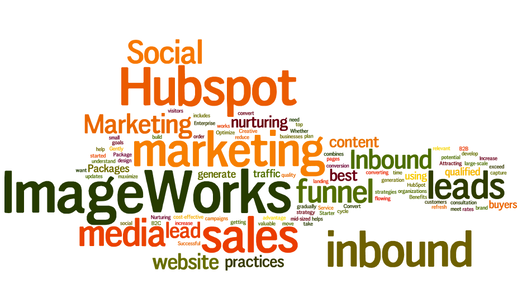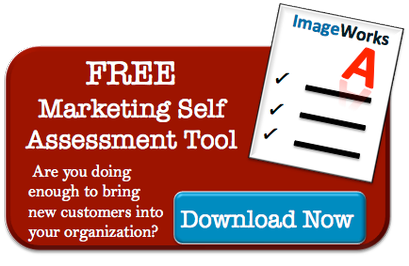 Whether you are just getting started in your inbound marketing campaign, or you've been working in the industry for some time, it's critical to continually grow your understanding and knowledge. Knowing and understanding important key marketing terms can help you communicate with your marketing team, or if you work within the industry, help boost your credibility. In an industry that's constantly changing, it's important to stay in touch with all of the latest trends, including the emergence of new fun terms, like Pin, or hash tag. But, sometimes you come across a term or concept that you aren't entirely sure of. No one ever said you had to be a know-it-all, in fact, you shouldn't have to be.
Whether you are just getting started in your inbound marketing campaign, or you've been working in the industry for some time, it's critical to continually grow your understanding and knowledge. Knowing and understanding important key marketing terms can help you communicate with your marketing team, or if you work within the industry, help boost your credibility. In an industry that's constantly changing, it's important to stay in touch with all of the latest trends, including the emergence of new fun terms, like Pin, or hash tag. But, sometimes you come across a term or concept that you aren't entirely sure of. No one ever said you had to be a know-it-all, in fact, you shouldn't have to be.
If you don't know every inbound marketing term in the world, don't let it get you down, we don't either. However, we here at ImageWorks would like to share some of our expertise and knowledge with you. That way, you can begin compiling your own working idea of what the inbound marketing industry is all about (the real meat and potatoes deal.)
14 Inbound Marketing Terms You Should Know.
Analytics: The discovery and communications of meaningful patterns in data, or as HubSpot describes it, "the eyes of inbound." Analytics help you to analyze trends, develop insights, and track engagement in order to make better marketing decisions.
Blogging: Blogging is a core component of inbound marketing. Short of web log, a blog allows an individual or a company to produce and maintain content on their website. It is also a great way to attract visitors, drive web traffic, and generate leads. Content marketing usually goes hand in hand with blogging as a blog is a great venue to publish new content weekly.
Bottom of the Funnel: This term refers to the final stage in your prospective customer's buying process. If your customer is at the bottom of the funnel stage, usually that means soon you may have a new customer on your hands.
Call-to-Action: Your CTA, is usually a text link, button, or image that encourages your website visitors to take action, or in this case, click-through. If a visitor clicks on your CTA they should be directed to a landing page, and become a new lead for your business. In your CTAs you'll want to use words like "Download Now" to entice them into clicking.
Content: Content is an article or piece of information that engages visitors. Content can come in all kinds of forms includes, but not limited to, ebooks, blog posts, infographics, white papers, videos, and graphs. Content is critical to any inbound marketing strategy.
Landing Page: A landing page is a page within your website that contains a form that visitors can fill out. This form is the backbone of your lead generation plan. Most landing pages revolve around an offer, something that is downloadable and available as a reward in exchange for some basic information. These offers can come in the form of a white paper, ebook, or even a checklist. Make your offer compelling and valuable to ensure new leads roll in.
Lead Nurturing: Lead nurturing is basically the development of a series of communications with new leads that come in. When leads come in you need to ensure they stay engaged, that's where lead nurturing comes into play. Deliver more high value content right to your audience through email campaigns to create a relationship with them.

Middle of the Funnel: This is the stage your visitor enters after establishing what or why they are looking for products or services. Typically middle of the funnel offers incorporate your business and a solution to the problems your lead is looking to remedy.
Offer: An offer is whatever you will be providing to your customers in exchange for their information. Whether it is content, like an ebook or white paper, or a free consultation, it needs to appeal to your clientele's needs.
Persona: A persona, or buyer persona, refers to the basic profile you would give your target audience. This is effective to outline so that way you can give your marketing team a sense of what your ideal client would be, and in turn helps them make informed marketing decisions.
Responsive Design: A responsive web design adapts to how it is being viewed, regardless of what platform you are viewing it from. Whether your visitors are on a laptop, desktop, tablet, or phone, your website can transform to fit each, and still be easily read and navigated.
Social Media: Social media is media through social interaction. Being on social platforms makes your target audience a lot more accessible to your company. Social media allows marketers to enhance their reach and growth to obtain business goals.
Top of the Funnel: This is the very first stage of the buying cycle. Prospective leads at this stage are shopping around and research to find a solution to any problems they are facing. Creating content that helps leads identify a solution is important for your TOFU.
Workflow: A workflow is essentially another term to describe lead nurturing. It helps you to map out how your lead nurturing plan will be setup and executed.
Looking to get your marketing on the right track? Download our FREE marketing self assessment tool to get started!

